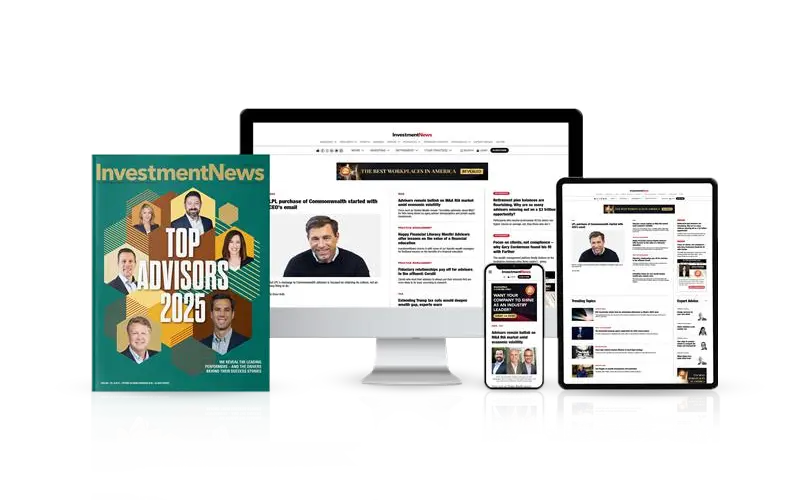

Despite the sophistication of today's tech offerings, many firms and advisers face an uphill battle in building an integrated tech stack that provides everything they need. Complicating matters is that some fail to realize how an ad hoc approach to technology can impact their entire operation.
In some respects, the dynamic evokes memories of the evolution of the smartphone, which began as an effort to combine all the disparate personal tools that already existed into one consolidated platform that was sleek, easy-to-use and intuitive. Now, billions worldwide have access to a hand-held computer customized to their daily routine everywhere they go.
Firms and advisers need to approach the construction of their tech stacks in the same way. Here's how:
Consider your needs. Before Steve Jobs unveiled the iPhone in 2007, it was of course possible to make a call, take a photo, schedule a meeting, text with friends or send an email. What Apple did better than anyone else was to package these functions together. The result was a dynamic, touch-friendly interface that was both enjoyable and easy to use.
This is relevant in thinking about your tech stack. Do you have what you need to tackle all your necessary daily tasks, including everything from compliance to managing portfolios and communicating with clients? And, importantly, are the tools adaptable, convenient and in one place? Or, proverbially, are you still using one device to make phone calls and another to send email?
Integration and ease of use. Having the requisite tech tools is just the start. The real keys are integration and ease of use. Imagine having a smartphone that either didn't allow you to send pictures via text or forced you to jump through a bunch of hoops to do so. Today, few people would settle for a device like that.
Similarly, in wealth management, a tech stack in which portfolio construction tools are not integrated intuitively with performance and risk reporting is equally undesirable. When a member of your team labors over a task that should only take a couple of clicks to complete, it’s both a waste of time and produces a poor client experience.
Unlock innovation to grow. When the iPhone first launched, it continued to lag the BlackBerry. It was only after the App Store -- along with the second-generation iPhone -- was introduced a year later that sales took off.
That's in part because that distribution platform was able to support opportunities that didn't exist before then. This is perhaps best highlighted by ride-hailing businesses, which likely wouldn’t exist were it not for smartphones.
Something similar is possible when you can access an integrated solution that is aligned with the way your business operates: It creates the type of scale that results in better processes and more business relationships.
What tasks are crucial to my business? Which ones help it grow? Which ones occupy too much time relative to how much value they add? And what do clients need that they are currently missing?
All these questions will help you get to the heart of whether you have the right tech stack. But perhaps a better one: Why can't I get something that works as well as the smartphone I carry around with me every day?
Dr. Andy Aziz is the executive vice president of business development at d1g1t, a Toronto-based enterprise wealth management platform.

After a two-year period of inversion, the muni yield curve is back in a more natural position – and poised to create opportunities for long-term investors.

Meanwhile, an experienced Connecticut advisor has cut ties with Edelman Financial Engines, and Raymond James' independent division welcomes a Washington-based duo.

Osaic has now paid $17.2 million to settle claims involving former clients of Jim Walesa.

Oregon-based Eagle Wealth Management and Idaho-based West Oak Capital give Mercer 11 acquisitions in 2025, matching last year's total. “We think there's a great opportunity in the Pacific Northwest,” Mercer's Martine Lellis told InvestmentNews.

Osaic-owned CW Advisors has added more than $500 million to reach $14.5 billion in AUM, while Apella's latest deal brings more than $1 billion in new client assets.
Orion's Tom Wilson on delivering coordinated, high-touch service in a world where returns alone no longer set you apart.
Barely a decade old, registered index-linked annuities have quickly surged in popularity, thanks to their unique blend of protection and growth potential—an appealing option for investors looking to chart a steadier course through today's choppy market waters, says Myles Lambert, Brighthouse Financial.
